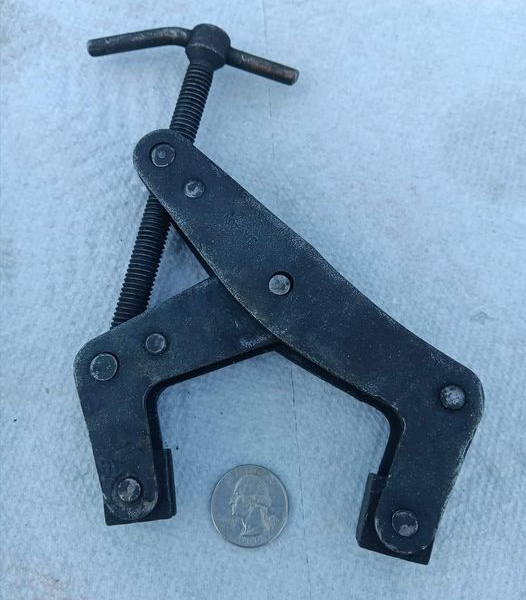Clamps may seem simple, but they’re an essential tool in countless industries, from woodworking to metalworking. These versatile devices hold objects together securely, applying pressure to prevent movement while you work. With so many different types available, each designed for specific tasks, it’s crucial to understand which clamp is right for the job. Let’s take a deep dive into the world of clamps, exploring their types, uses, and unique advantages.
What is a Clamp? A Crucial Tool for Stability

A clamp is a fastening device that uses inward pressure to hold objects tightly in place. Clamps are indispensable in construction, woodworking, metalworking, and many other trades. They’re also commonly used in crafting, DIY projects, and even in some medical applications.
Clamps range from small, hand-held versions for detailed work to large, heavy-duty clamps for industrial tasks. While some clamps are designed to be temporary, allowing you to position components as you assemble them, others are intended for permanent installations. No matter the type, every clamp is designed with the same goal: to keep your work stable, precise, and secure.
Types of Clamps: Choosing the Right One for Every Task
The world of clamps is vast, with each type serving a unique purpose. Here, we’ll look at some of the most common clamps and their specialized uses.
1. C-Clamps: The Classic All-Purpose Tool
C-clamps are among the most recognizable clamps, named for their C-shaped frame. They’re widely used in woodworking and metalworking because of their versatility. With a simple screw mechanism, they can apply strong pressure to secure objects of various sizes and shapes.
- Advantages: C-clamps are durable and can provide considerable clamping force. They’re ideal for holding wood or metal in place while sawing, drilling, or welding.
- Limitations: One common issue with C-clamps is that their jaws can twist under pressure, which can misalign the objects they’re holding.
2. Kant-Twist Clamps: The Evolution of the C-Clamp
For those seeking a more advanced option, Kant-twist clamps offer the best features of C-clamps with improved stability. Unlike traditional C-clamps, the floating jaws of Kant-twist clamps stay flat on the surfaces, even if they’re not parallel. This prevents twisting and ensures a secure hold.
- Unique Design: The cantilever design of the Kant-twist clamp reduces jaw twist, and the built-in V-block can hold round stock securely. This makes them a favorite in metalworking and welding.
- Advantages: Kant-twist clamps apply maximum pressure with minimal effort, and they don’t “walk” or pivot as you tighten them. Their comfortable grip makes them easy to use for repetitive tasks, and their durability ensures they can handle heavy-duty work.
3. Bar Clamps: Ideal for Long, Flat Surfaces
Bar clamps, also known as F-clamps, are perfect for securing longer objects or wide surfaces. They consist of a long metal bar with adjustable clamps at either end, allowing you to apply pressure across larger areas.
- Usage: Bar clamps are commonly used in carpentry, particularly when gluing or joining boards to create tabletops or frames.
- Advantages: They can span wide areas, providing even pressure across the surface. Many bar clamps also have quick-release mechanisms, allowing for fast adjustments.
4. Pipe Clamps: Adjustable Strength for Larger Projects
Pipe clamps are another option for securing large objects, particularly in woodworking and cabinetry. These clamps use a length of pipe as the framework, with adjustable jaws that slide along the pipe to accommodate different sizes.
- Usage: Often used in woodworking, pipe clamps can be adjusted to handle various lengths, making them ideal for custom projects.
- Advantages: Pipe clamps offer excellent strength and versatility, as you can change the length of the pipe to fit your project needs. They’re durable and can withstand significant pressure, making them suitable for large-scale tasks.
5. Spring Clamps: Quick and Convenient Clamping
Spring clamps are lightweight, hand-held tools that provide quick clamping with minimal effort. They use a simple spring mechanism to hold small objects together temporarily, making them ideal for crafting or light-duty projects.
- Advantages: Spring clamps are easy to use and apply instant pressure. They’re inexpensive, compact, and perfect for small, repetitive tasks.
- Limitations: They don’t provide the same clamping force as other types, so they’re not suitable for heavy-duty jobs or precision tasks.
6. Corner Clamps: Precision for 90-Degree Joints
Corner clamps are essential for creating precise right-angle joints, making them perfect for building frames or assembling cabinets. These clamps hold two pieces at a 90-degree angle, ensuring that your work stays aligned.
- Usage: Often used in woodworking, corner clamps are ideal for mitered joints and picture frames.
- Advantages: They provide stability and accuracy for right-angle projects, allowing for clean, professional results.
The Benefits of Using a Clamp: Why They’re Essential for Every Toolbox
Clamps provide stability and precision, which is essential in any project. Here are some reasons why clamps have earned a place in every toolkit:
- Increased Precision: Clamps keep your materials in place, which is crucial when accuracy matters. Whether you’re cutting, sanding, or gluing, clamps ensure that your work remains stable, allowing you to achieve precise results.
- Improved Safety: Holding objects with your hands while using power tools can be dangerous. Clamps act as an extra pair of hands, securing your work and allowing you to focus on operating tools safely.
- Efficient Workflow: Using clamps makes it easier to perform tasks independently. You can position and hold materials without needing an assistant, which speeds up your workflow and improves productivity.
- Versatility: Clamps are suitable for a wide range of applications. From small crafting projects to industrial tasks, clamps can handle various materials and environments.
Choosing the Right Clamp: Factors to Consider

Selecting the appropriate clamp for your project depends on several factors:
- Material: Different clamps are made from various materials, including steel, aluminum, and plastic. Consider the durability and weight required for your specific task.
- Size: The clamp’s reach and capacity should align with the size of the objects you’re working with. Larger projects may require bar clamps or pipe clamps, while smaller tasks may only need a spring clamp.
- Clamping Force: Some clamps, like C-clamps and pipe clamps, provide a strong clamping force suitable for heavy-duty tasks, while others are designed for lighter jobs. Choose one that provides the right amount of pressure without damaging your materials.
Conclusion: The Versatile Value of Clamps
From woodworking to metalworking, clamps are invaluable tools that provide stability, safety, and precision. With so many types available, there’s a clamp for every task, whether you’re building a bookshelf, welding metal, or crafting a new piece of art. The Kant-twist clamp, for example, has revolutionized metalworking with its innovative design, while classic C-clamps remain popular for their versatility and strength.
As you build out your toolkit, consider investing in a variety of clamps to cover a range of applications. With the right clamps, you can enhance your efficiency, improve your accuracy, and tackle projects of any size with confidence. After all, a stable workpiece is the foundation of quality craftsmanship, and that’s something every professional or DIY enthusiast can appreciate.


